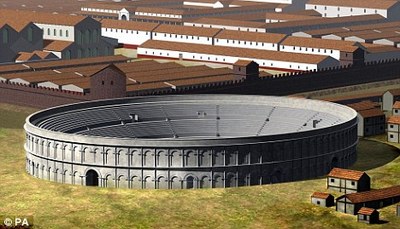
Some scholars seem to think so. From the Daily Mail:
His is among the most enduring legends in our island’s history.
King Arthur, the gallant warrior who gathered his knights around the Round Table at Camelot and rallied Christian Britons against the invading pagan Saxons, has always been an enigma.
But now historians believe they have uncovered the precise location of Arthur’s stronghold, finally solving the riddle of whether the Round Table really existed.
And far from pinpointing a piece of furniture, they claim the ‘table’ was in fact the circular space inside a former Roman amphitheatre.
The experts believe that Camelot could in fact have been Chester Amphitheatre, a huge stone-and-wood structure capable of holding up to 10,000 people.
They say that Arthur would have reinforced the building’s 40ft walls to create an imposing and well fortified base.
The king’s regional noblemen would have sat in the central arena’s front row, with lower-ranked subjects in the outer stone benches.
Arthur has been the subject of much historical debate, but many scholars believe him to have been a 5th or 6th Century leader.
The legend links him to 12 major battles fought over 40 years from the Scottish Borders to the West Country. One of the principal victories was said to have been at Chester.
Rather than create a purpose-built Camelot, historian Chris Gidlow says Arthur would have logically chosen a structure left by the Romans.
‘The first accounts of the Round Table show that it was nothing like a dining table but was a venue for upwards of 1,000 people at a time,’ he said.
‘And we know that one of Arthur’s two main battles was fought at a town referred to as the City of the Legions. There were only two places with this title. One was St Albans, but the location of the other has remained a mystery.’
Researchers, who will reveal their evidence in a television documentary this month, say the recent discovery at the amphitheatre of an execution stone and a wooden memorial to Christian martyrs suggests the missing city is Chester.
Intriguing, no? Check out the rest.
